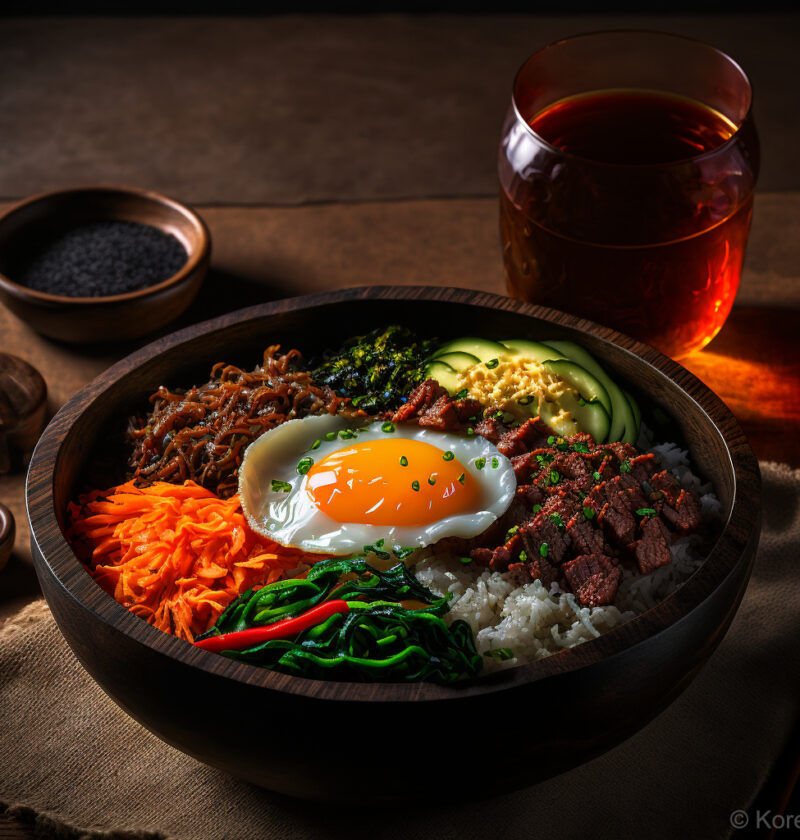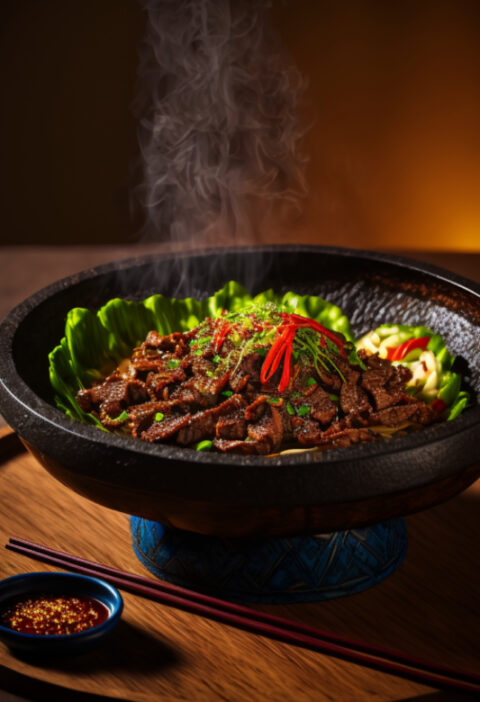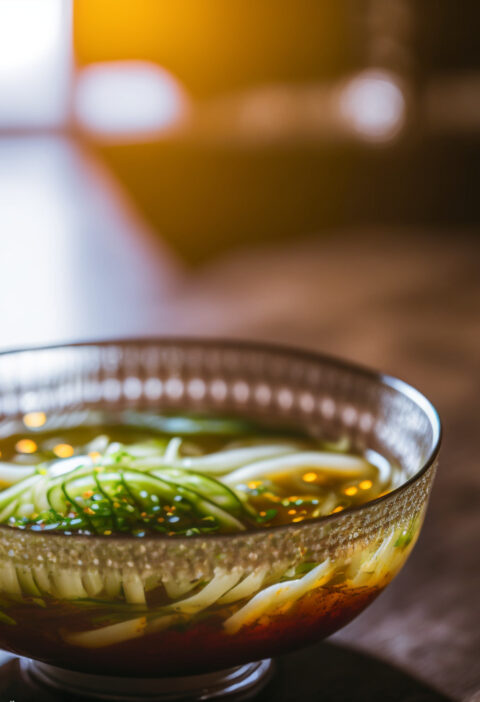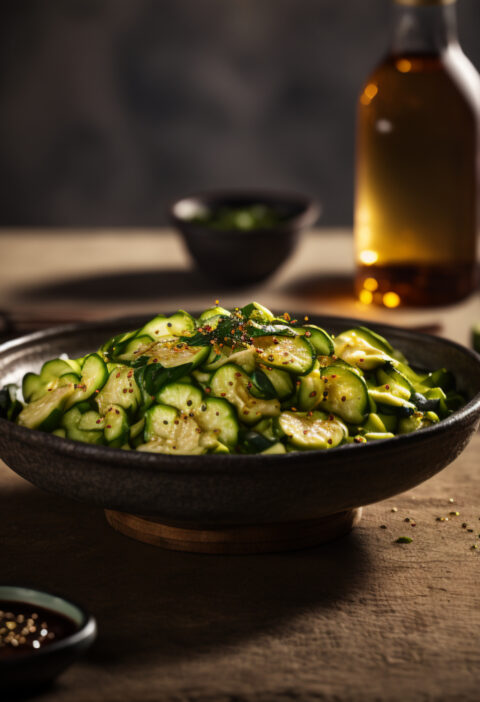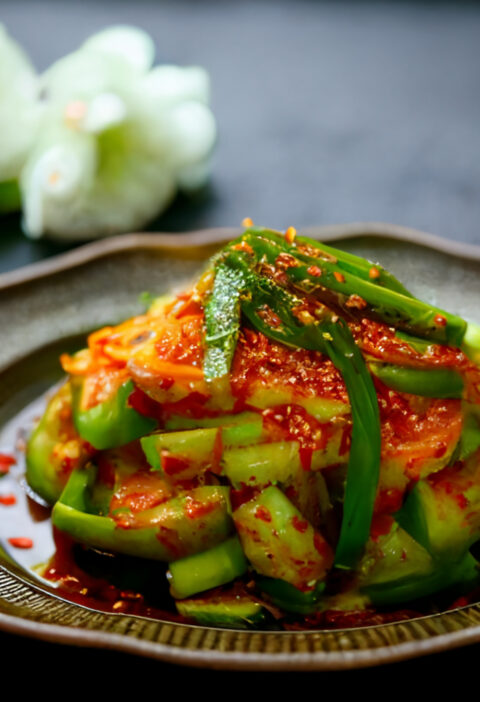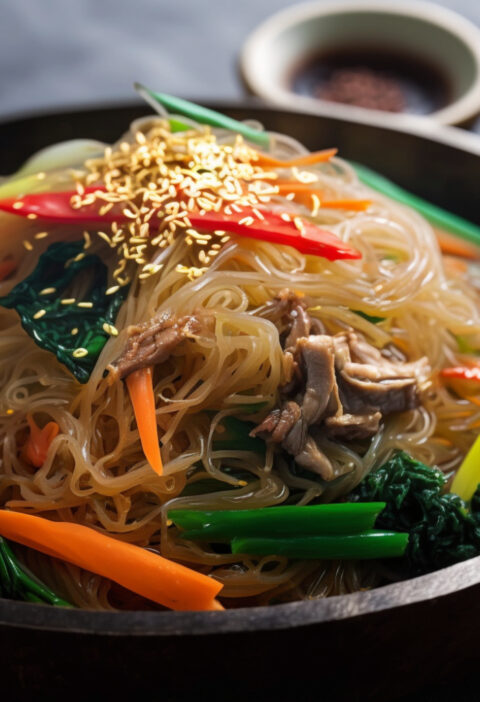What is Bibimbap?
Bibimbap is a traditional Korean dish that consists of a bowl of warm white rice topped with a variety of vegetables, meat, and a fried egg. The word “bibimbap” literally means “mixed rice,” as the dish is known for its combination of various ingredients that are mixed together before eating.
Bibimbap is typically made with a mix of vegetables such as spinach, bean sprouts, carrots, and mushrooms, as well as protein sources such as beef, chicken, or tofu. The toppings are arranged on top of the rice in the bowl, and a fried egg is often added as a finishing touch. The dish is then mixed together and eaten with a spicy red pepper paste called gochujang, which adds a layer of flavor and heat to the dish.
Bibimbap is a popular and satisfying meal that is perfect for any time of day. It is a delicious way to get a variety of nutrients in one bowl, and its mix of flavors and textures is sure to satisfy your cravings. Whether you’re looking for a quick and easy meal or simply want to try a tasty and traditional Korean dish, bibimbap is a great choice.
How To Make Bibimbap
Ingredients
- 2 cups cooked white rice
- 1 lb. of beef steak
- 1/2 cup bean sprouts
- 1/2 cup julienned carrots
- 1/2 cup julienned zucchini
- 1/2 cup julienned cucumber
- 1/2 cup julienned shiitake mushrooms
- 1/4 cup gochujang (Korean chili paste)
- 4 tablespoons sesame oil
- 2 cloves garlic, minced
- 1/2 teaspoon salt
- 2 eggs, fried
- Sesame seeds, for garnish
Instructions
- In a large bowl, mix together the cooked rice, bean sprouts, carrots, zucchini, cucumber, and mushrooms.
- In a small bowl, mix together the gochujang, sesame oil, garlic, and salt.
- Heat a large pan over medium-high heat. Add a few tablespoons of the gochujang mixture to the pan.
- Add the rice and vegetable mixture to the pan and stir to coat with the gochujang mixture.
- Cook for 5-7 minutes, or until the vegetables are tender.
- Heat a medium frying pan over medium-high heat. Add some sesame oil to the pan.
- Slice the beef into thin strips, then add to the pan. Fry until medium-rare or preferred cook.
- While the Bibimbap is cooking, heat a small pan over medium heat. Add a little bit of oil to the pan.
- Crack the eggs into the pan and fry until the whites are cooked and the yolks are still runny.
- Divide the Bibimbap among bowls and top with a fried egg. Garnish with sesame seeds.
A Trustworthy Delight Anywhere
One of my most memorable experiences with bibimbap was on a trip to Seoul, South Korea. I had been craving the dish for weeks, and when I finally had the chance to try it, I was not disappointed. I ordered the beef bibimbap at a small restaurant in the city, and as I waited for it to arrive, I couldn’t help but feel excited.
When the dish finally arrived at my table, it was a sight to behold. The bowl was filled with a steaming mound of rice, topped with a colorful array of vegetables, slices of beef, and a perfectly cooked fried egg. I mixed everything together, added a generous helping of gochujang, and dug in. The flavors were amazing – the beef was tender and flavorful, the vegetables were crisp and fresh, and the gochujang added just the right amount of heat. I finished every last bite, feeling satisfied and content. It was definitely one of the best meals I had on my trip, and I will always have a special place in my heart for bibimbap. I hope this recipe shows you just how delicious and worming bibimbap can be!

